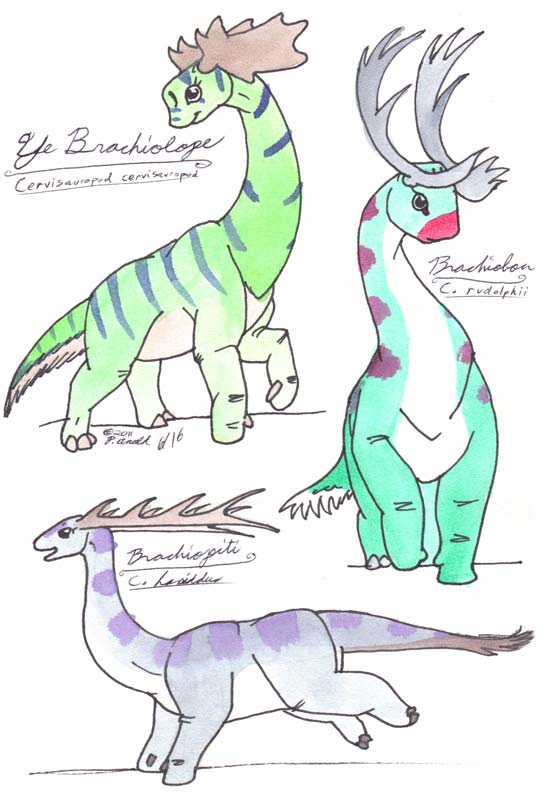The Dinosaur Data Book was published circa 1990 by The Diagram Group. Illustrators include Grahame Rosewarne, Ashley Best, Darren Bennett, Brian Hewson, Pavel Kostal, Lee Lawrence, Paul McCauley, Philip Patenall, and Micky Pledge (whew).
Overall, the book is very, very similar to A Field Guide to Dinosaurs (to the point where I recommend re-reading my review of it). There's no indication as to which artist drew what and most of the illustrations are in a fairly generic style. I was confident in scanning this book, as it's soft cover was well-reinforced, but I apologize if some of the images are still a little off. They're all at Flickr (contributed to the wonderful Vintage Dinosaur Art pool of course) so you can click them for larger versions.
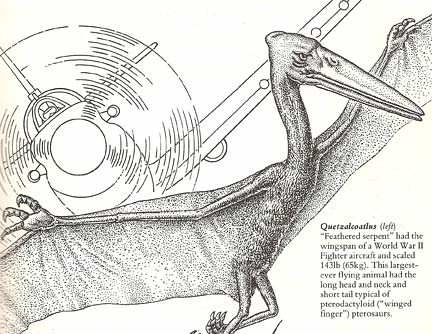
As with Field Guide, I'm going to be focusing on the stranger illustrations. I think this one is indicative of the book as a whole: it's got a very strange looking reconstruction of a prehistoric creature and a deeply strange indicator of scale. This poor 80's Quetzelcoatlus is about to be rear-ended by that airplane!
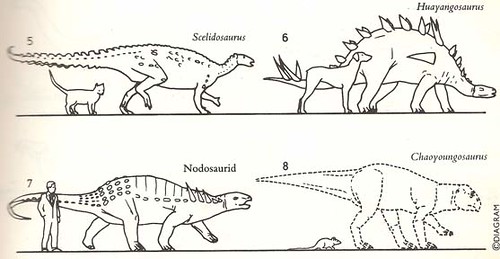
Odd scale markers are the book's forte, really. Get used to seeing the cat, the hound, and the man in a suit often. I haven't the slightest idea why Chaoyoungosaurus (sp) is drawn with a dotted line. Either the remains of the animal were fragmentary (which makes you wonder why they bothered to include him at all) or little ceratopsians were capable of becoming invisible.
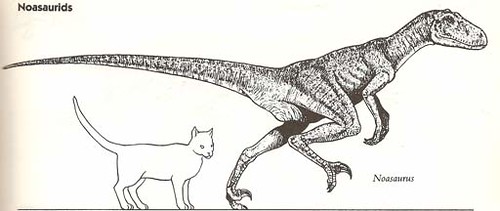
And with that in mind, Hilarious In Hindsight depictions of dinosaurs who were poorly understood back in the late 80's is why we are here today. This little fellow is Noasaurus, a dinosaur I remember well from being mentioned many times in guides like this at the time but who doesn't get much press today. The big deal about Noasaurus was the fact that this at first appeared to be a dinosaur who looked an awful lot like a dromeosaur, but was not at all closely related to them. That's convergent evolution. Today, Noasaurus is classified as a small abelosaur. Which is to say, if you hate feathered raptors, Noasaurus is here for you.
Or perhaps not, because current reconstructions of Noasaurus look... different.

Speaking of maniraptors, this Oviraptor doesn't look half bad for a book published in 1990. She's half-naked, but the crest is right as is the beak (I'm sorry her face got a little washed out in the photograph), and it looks like the artist even made an attempt to avoid the dreaded kangaroo hand trope.
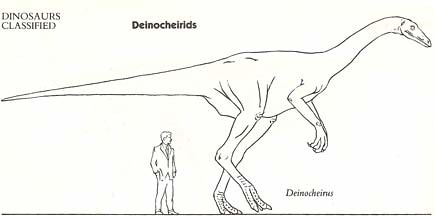
Here's a very speculative Deinocheirus and his famous crazy long arms. It almost looks like the artist was stuck between the then-recently popular "with arms and claws this long, it HAD to have been a horrible murderbeast!" theory and the current "actually, these look more like scaled-up arms from one of those little sissy-pants ornithomimids" theory.
Hey, speaking of assuming that an animal with really huge arms and long, long claws MUST have been a horrible murderbeast...
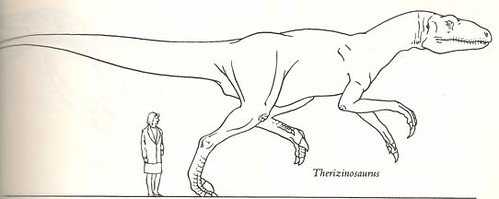
Yeah. I like to think the lady next to him is thinking, "You guys are going to be SO floored when it turns out these things actually looked more like Big Bird." This is a pretty obscure Therizinosaurus reconstruction that I referenced in this piece.
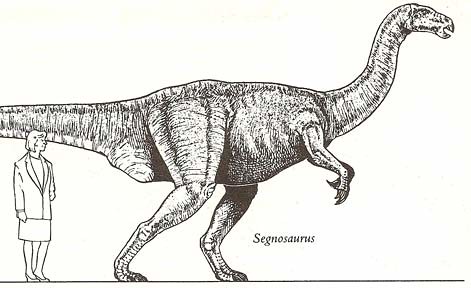
Meanwhile, Segnosaurus are still in Team Prosauropod in this book. I can hear the lady snickering still. She is, by far, the best character in the book, if only because she shows up in the craziest illustration. We'll get to that soon, but first...

Whaddup, Syntarsus? If you can't read the text, it explains how Syntarsus is often shown with feathers and that some scientists suppose that small theropods would have benefited from feathers "if they were warm-blooded". This is in spite of the fact, the text goes on, that no dinosaur has been found with feathers except for Archeopteryx, "usually thought of as a bird". Ow... my brains...
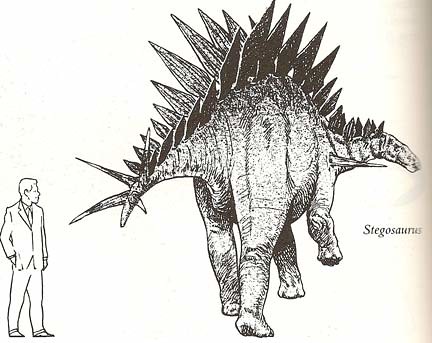
As you may have noticed, there weren't many offbeat illustrations of non-theropods. Nothing really stood out as strange... until I saw this Stegosaurus. Love those shoulder-spikes. The text provides no reasoning at all behind this reconstruction, and it's especially strange given that the most outrageously spiky stegosaurs were yet to be fully described.
And now, as promised, the weirdest illustration in the book:
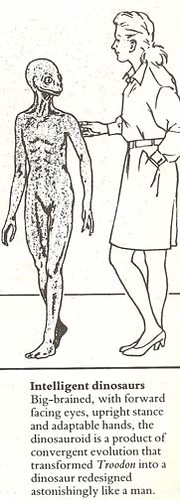
"I say, horrible Anthropocentric alien-thing, have you the time?"
I'm kicking myself for not taking a picture of the whole thing now, but this was actually part of a two-page spread of "fictional dinosaur species", mostly from The New Dinosaurs. Really. Because guides of modern mammals have two-page spreads of unicorns and centaurs and jackalopes and sidehill gougers and drop-bears and hoppopotomi and elephunkeys and platypus-bears. I hope you can see my facepalm, publishers of the Dinosaur Data Book, because I am doing it as hard as I can.
So, Dale Russel's Dinosauroid has been given more attention in this book. I've collected so many examples of this, I might as well plan on a future post where I show all the examples I have of perfectly normal and serious documents on dinosaurs which suddenly and out of nowhere include this thing. Lord knows why, I guess the concept really captured peoples' imagination for some reason. (By the way, "redesigned"...? )
Speaking of dinosaur-people...
----
Sketch of the Day!
No, I don't hate all fictional species...
